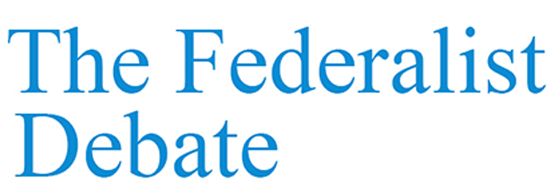Piketty on the European Union
Joseph Preston Baratta
Professor of World History and International Relations at the Worcester State College, MA, USA
Thomas Piketty
Capital and Ideology
Belknap Press of Harvard University, Cambridge MA, 2020
Thomas Piketty is a French political economist whose books since 2015 have attracted world-wide attention. US Nobel Prize-winning economist Paul Krugman calls Capital and Ideology “the most important economics book of the year and maybe of the decade.” It is well over 1,000 pages long, but it covers economic history since feudal times through the period of industrial capitalism, and continues into the future. At the end, he boldly envisions a world of “democratic socialism, participatory and federalist, ecological and multicultural.” A shorter work of 2022, A Brief History of Equality, may be more accessible to readers who distrust economics, but the book under review offers full exposition of new evidence and makes timely arguments for a more equitable economic life shared by all humanity.
Piketty begins with the rise of inequality around the world since 1980. The share of national income of the top decile (that is, the top 10 percent of the population) in the United States, Europe, Russia, India, and China has grown from 17-35 percent to 34-55 percent, while that of the bottom 50 percent (generally the working class) has fallen to 15-20 percent by 2018 [Fig. I-3, p. 21]. The middle class (50-90 percent of the population) have not grown like the top decile. The result has been that the decile (the top 10 percent) have acquired most of the gains of income since 1980, as has been widely perceived in struggles of the 90 percent versus the 10 percent in recent years. The situation is even worse for the top 1 percent (the “centile”) - the new billionaires and majority shareholders of great international corporations. This situation can be contrasted with the period after the Second World War (1950–1980) when the five major regions of the world enjoyed a relatively egalitarian phase, maintained by progressive income and inheritance taxes, some for years as high as 70 percent.
Another display of inequality is that of the capture of economic growth in 1980-2018. The bottom 50 percent captured 12 percent of the growth, especially in developing countries, but the top 1 percent captured 27 percent. The lower and middle classes in wealthy countries (90 percent of the population) declined in their rate of capture, while the top centile (1 percent) grew very rich (Fig. I.5, p. 25). These graphs are typical of Piketty’s presentation of the data. He avoids the Gini coefficient, which measures inequality by averages, 0 to 1, masking the distribution of wealth over time. Moreover, the very data are unfamiliar, compiled from income tax returns, reports of inheritance taxes, national accounts, surveys, fiscal and estate data, in the World Inequality Database (WID.world). That represents the combined efforts of more than 100 researchers around the world associated with the Paris School of Economics, where Piketty is based. Other economists will have to judge the accuracy of his data or join in the effort to improve them, which Piketty encourages. I tended to trust in the accuracy of his figures, which are novel and significant.
Piketty argues that “ideology” justifies inequality in every society. Today, the justifying ideologies have names like property, entrepreneurship, meritocracy (what he calls “proprietarian” and meritocratic ideology), typical of the 19th century. By the 21st century, such ideology has become, he observes, “fragile.” Do billionaires, hedge fund managers, lavishly paid corporate managers really exhibit hard work and wise management of their money, compared to the lack of talent virtue, and diligence of the immense majority (90 percent)? Have they not acquired their wealth by capitalizing on the legal and social institutions that the whole society supports? Wealth is “socially constructed,” allowed to accumulate in accordance with each society’s sense of justice. Piketty steadily disentangles such ideologies by presentation of the data, which gives him a basis for arguing in favor of a return to the ideology of social democracy as of the 1950-1980 period. He never argues from necessity (“determinism”). All follows from debate, controversy, backsliding, experimentation, and establishment. He is, as all economists really are, a political economist.
His large method may be exhibited in his treatment of the European Union, now in crisis because of the threat of Russia’s war in Ukraine. Piketty finds that the EU has evolved as a “place of competition of all against all, of benefit primarily to the upper classes.” The liberalization of capital flows since the 1980s, without common fiscal regulation or sharing of cross-border financial holdings, has contributed to escalating fiscal competition to the advantage of the more mobile upper classes. The lower and even the middle classes perceive this injustice and tend to vote against the European project, as evident by the close vote on the Maastricht Treaty in 1992 and the rejection of the draft European Constitution in 2005. The view that the socially disadvantaged are spontaneously and irrationally nationalist or racist, “which conveniently allows ‘progressive’ elites to justify their civilizing mission”, does not stand against the facts of worker solidarity with rebellions against French colonial rule in Algeria and West Africa. “Until the European Union is clearly and visibly seen to serve the cause of social and fiscal justice (for instance by imposing a European tax on high incomes and large fortunes),” Piketty observes, “it is difficult to imagine an end to the bitter divorce that has alienated the disadvantaged classes from the European project” [pp. 799-802].
Piketty sees the EU as a project aimed only at competition between countries and individuals, based on the free circulation of capital, goods, services, and labor – not on social and fiscal justice. He compares it to federal states like the United States of America and the Indian Union, where progressive taxes permit budgets of 15-20 percent of GDP, unlike the EU, which has no federal taxes and whose budget is limited to 1 percent of GDP. “By contrast, the European Union is a regional political organization in which virtually the only common bond is the principle of pure and perfect competition” [pp. 857-861].
The danger is not only of further withdrawals like Brexit, but also a turning away of the disadvantaged classes to nationalist and “identitarian” politics, that promise them prosperity and even “greatness.” Piketty outlines an alternative ideology – “social federalism in the European context.” Reform of the unanimity rule in the Council of Ministers on any matters touching common fiscal, budgetary, or social policy is needed, as is reform of representation in the Council from one country, one vote. The logic points to vesting taxing power in the popularly elective European Parliament, following the example of the American and French revolutions. “Since at least the eighteenth century and the age of the Atlantic Revolutions,” Piketty argues, “we have known that the power to levy taxes is the quintessential parliamentary power”. He concludes with modifications for a similar solution in Europe, where national parliaments do have strong traditions of voting on fiscal matters and on ratification of international treaties [pp. 892-898].

